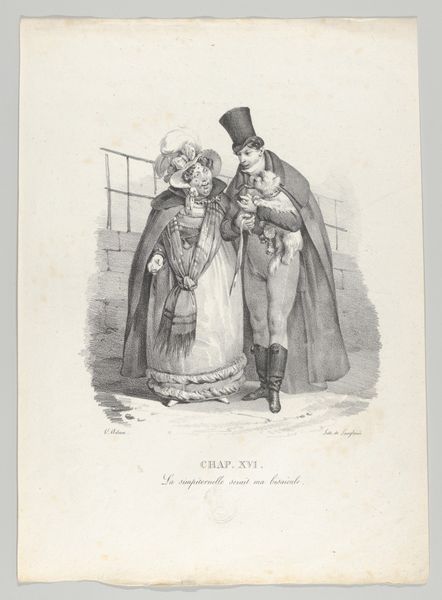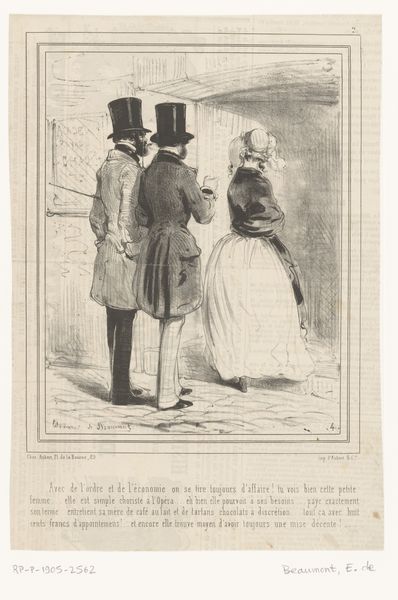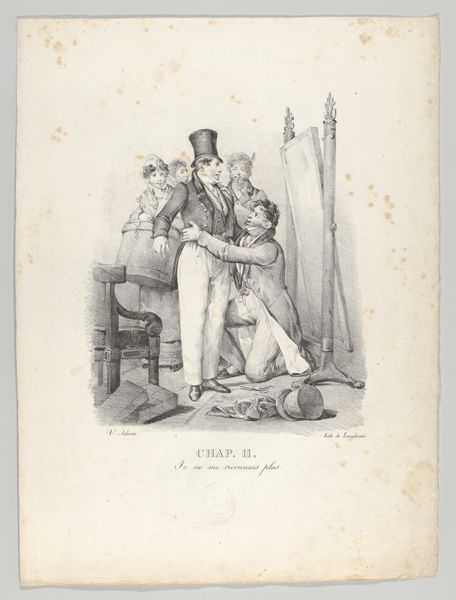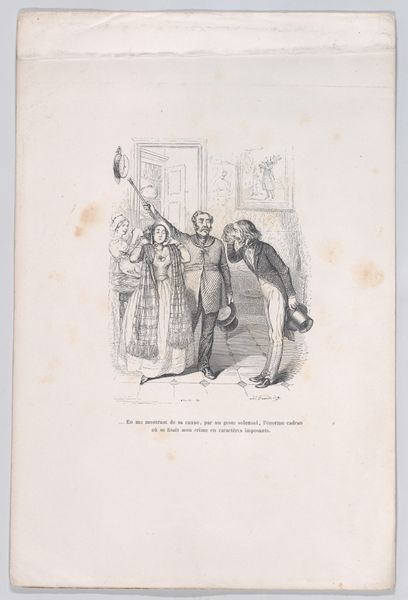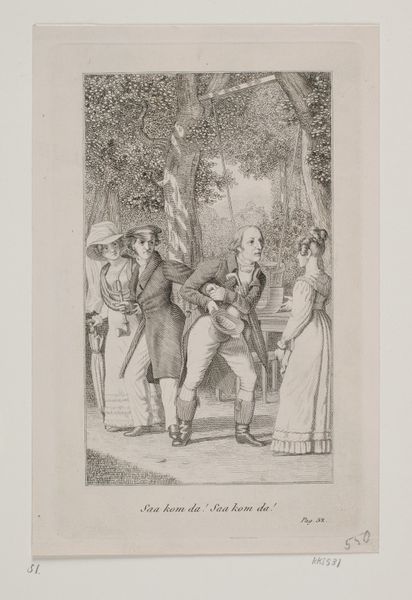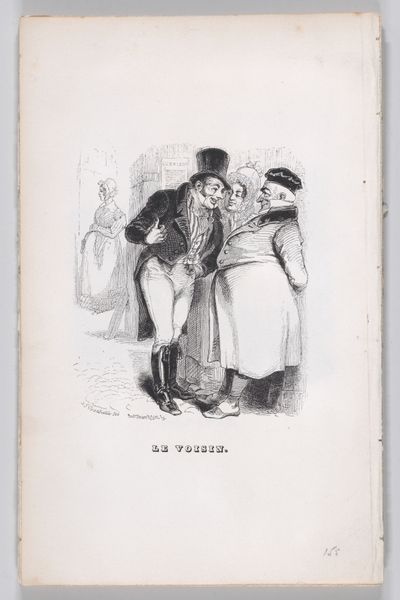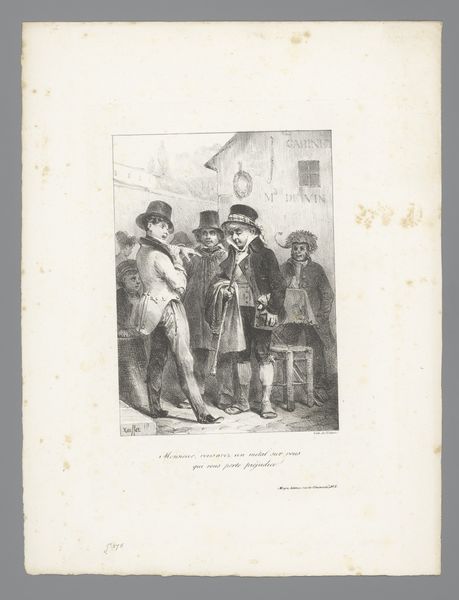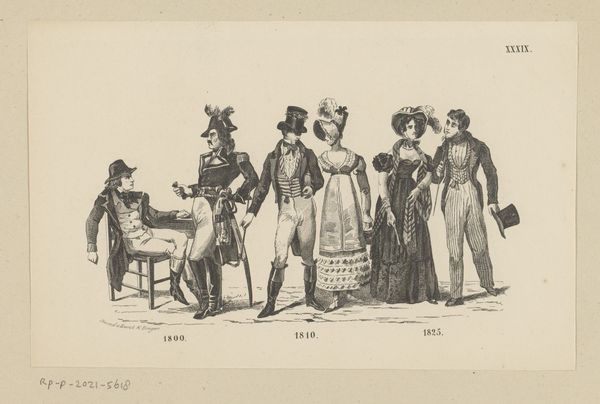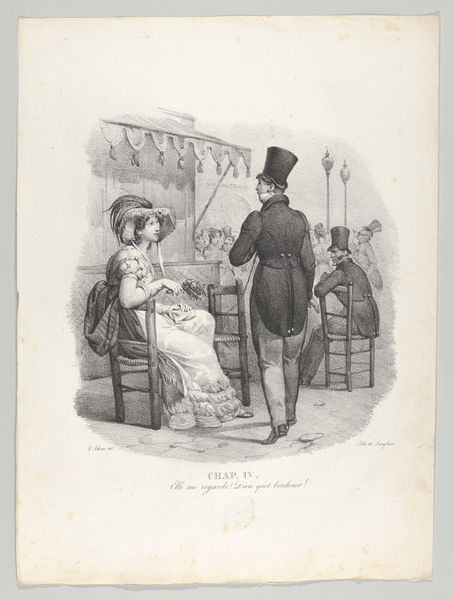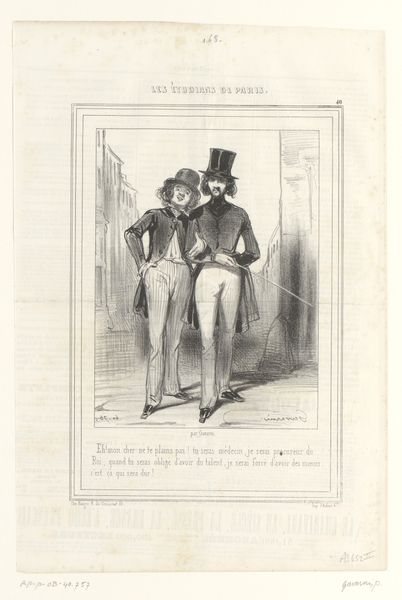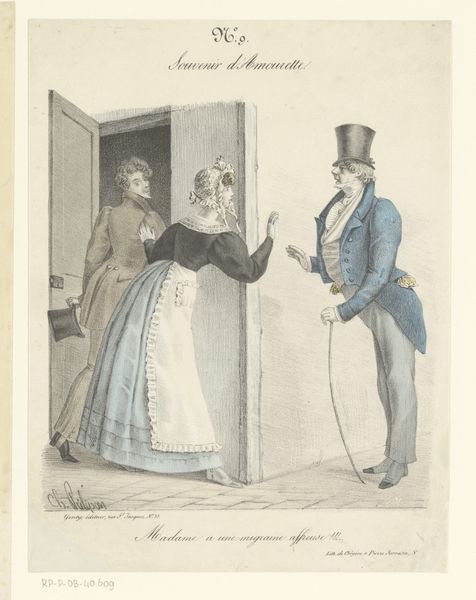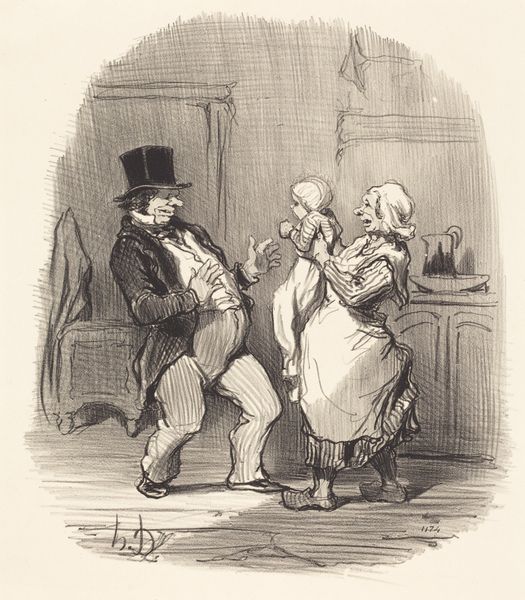
drawing, print, engraving
#
drawing
#
narrative-art
# print
#
figuration
#
group-portraits
#
romanticism
#
history-painting
#
engraving
Dimensions: 14 1/4 × 10 1/16 in. (36.2 × 25.5 cm)
Copyright: Public Domain
Curator: Today we’re looking at Victor Adam’s 1824 engraving, "Chap. VII: C'est à qui m'aura," which translates to "Who will claim me?". It's currently residing here at the Metropolitan Museum of Art. Editor: My initial impression is one of slight anxiety, a sort of compressed, competitive energy captured in this grayscale scene. It appears we have a central figure, pulled in different directions, almost a tug-of-war enacted with elegance and sartorial splendor. Curator: Precisely. Note how Adam orchestrates the composition around this central figure, employing delicate engraving techniques. The use of hatching and cross-hatching, for example, is particularly striking in how it creates depth. Observe also the visual contrast between the dark coats of the men and the flowing dresses of the women vying for attention. This opposition reinforces the tensions within the image. Editor: From a material perspective, the printmaking process is central to the piece's meaning. This engraving, as a medium, inherently allows for reproduction, democratization, making narratives and images available to a wider audience beyond elite circles. Consider the economic implications of its mass production and consumption. Curator: The narrative aspect is certainly potent. This Romantic scene implies a deeper story, doesn't it? The gaze of each figure, the positioning of their hands, directs the viewer to infer a relationship fraught with drama and perhaps unspoken desires. The formal rendering amplifies this psychological complexity. Editor: Indeed, but how accessible would the average person find this? Engravings, though cheaper than paintings, still catered to a burgeoning middle class. What kind of lifestyle is depicted, one of top hats and tailored jackets, referencing social mobility through conspicuous displays of textiles, the labour-intensive manufacturing behind these cloths and engravings, and a performative class aspiration. Curator: An interesting point! We mustn't divorce art from its period context. But on the plane of pure semiotics, the symbolism functions whether consciously considered or not. These codes of romantic and material desire, even when consumed without full awareness of context, still resonate deeply because of the sophisticated grammar used. Editor: Perhaps, and as a printed multiple the engraving inevitably lost something of the hand, even if, in Romanticism, the sense of its craft still played a role. In our time the meaning accrues to something so much later in the long, multiple life of the work of art. Curator: An apt point. This analysis underlines that there's never a single authoritative truth in the appreciation of artwork. Editor: Agreed. It shows, for me, the vitality in how we confront an artwork so distantly linked to a specific labour and origin today.
Comments
No comments
Be the first to comment and join the conversation on the ultimate creative platform.
